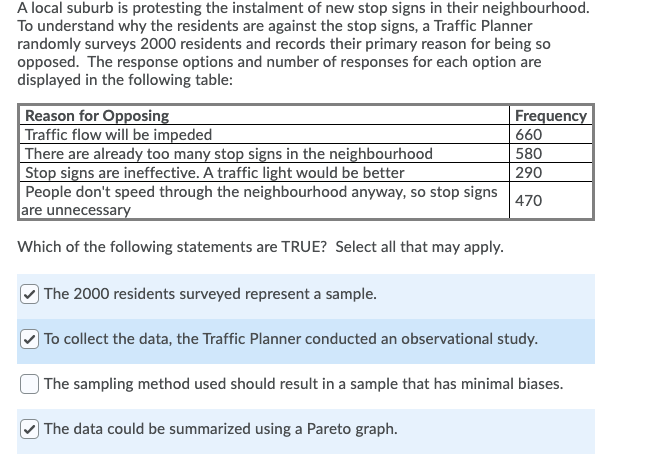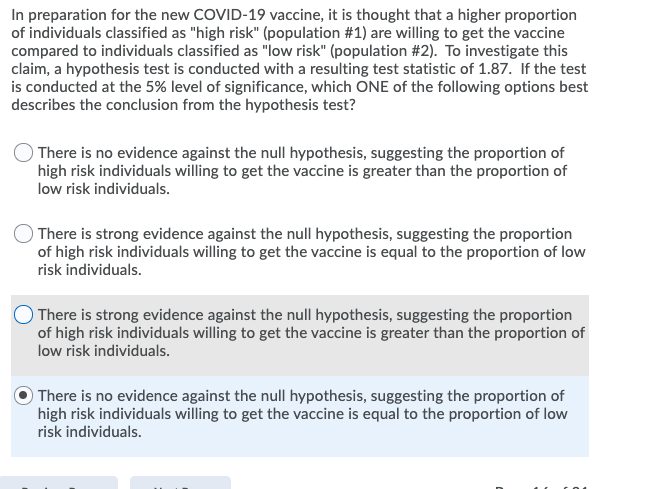Hi there,
Could someone please help me solve the following;
A local suburb is protesting the instalment of new stop signs in their neighbourhood. To understand why the residents are against the stop signs, a Traffic Planner randomly surveys 2000 residents and records their primary reason for being so opposed. The response options and number of responses for each option are displayed in the following table: Reason for Opposing Frequency Traffic flow will be impeded 660 There are already too many stop signs in the neighbourhood 580 Stop signs are ineffective. A traffic light would be better 290 People don't speed through the neighbourhood anyway, so stop signs 470 are unnecessary Which of the following statements are TRUE? Select all that may apply. The 2000 residents surveyed represent a sample. To collect the data, the Traffic Planner conducted an observational study. The sampling method used should result in a sample that has minimal biases. The data could be summarized using a Pareto graph.In preparation for the new COMB-19 vaccine, it is thought that a higher proportion of individuals classified as \"high risk" [population #11 are willing to get the vaccine compared to individuals classified as \"low risk" {population #21. To investigate this claim, a hvpothesis test is conducted with a resulting test statistic of 1.51 If the test is conducted at the 5% level of significance. which ONE of the following options best describes the conclusion from the hvpothesis test?I Q There is no evidence against the null hvpothesis. suggesting the proportion of high risk individuals willing to get the vaccine is greater than the proportion of low risk individuals. 0 There is strong evidence against the null hvpothesis. suggesting the proportion of high risk individuals willing to get the vaccine is equal to the proportion of low risk individuals. 0 There is strong evidence against the null hvpothesis. suggesting the proportion of high risk individuals willing to get the vaccine is greater than the proportion of low risk individuals. (9 There is no evidence against the null hypothesis. suggesting the proportion of high risk individuals willing to get the vaccine is equal to the proportion of low risk individuals








